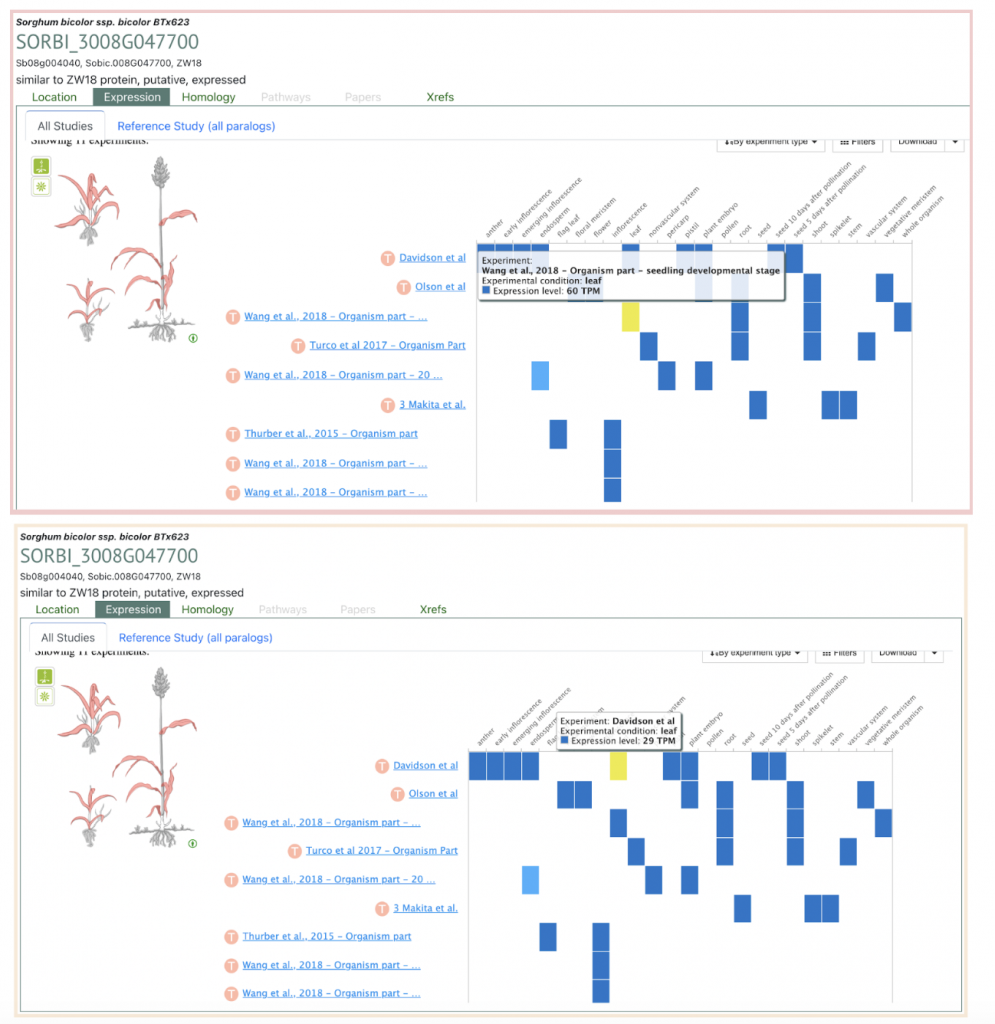Sorghum’s Response to Temperature Stress Varies with Genotype and Shifts Throughout the Day.
Plants use circadian or time-of-day gating to coordinate specific responses to the most optimal times of the day. In terms of gene expression in response to stress, changes in expression can vary depending on the time of day. Sorghum, a highly stress tolerant C4 crop, differs in its growth while under temperature stress based on genotype. Although the relationship between the time of day and genome-wide temperature stress responses has been investigated in some species such as Arabidopsis and rice and more recently wheat, it has not yet been determined if the molecular responses to temperature stress in C4 crops are regulated by the clock nor whether the magnitude of these responses is influenced by the genetic background. To gain insight into these factors, scientists at the University of California, Riverside and Texas Tech University studied the immediate transcript abundance changes in thermo-tolerant and thermo-sensitive sorghum genotypes. Bonnot et al. monitored heat-tolerant (Macia), cold-tolerant (SC224), and heat-/cold-susceptible (RTx430) sorghum varieties in early morning, middle of the day, late afternoon, and 3 hours after the beginning of the night after a short exposure (1hour) to either heat (42°C) or cold (10°C). They found that, in sorghum, the time of day modulates the molecular response to temperature stress. Further differences were found based on genotype sensitivity. In fact, up to 70% of the identified Differentially Expressed Genes (DEGs) are diurnally controlled relative to the 52% of DEGs genome-wide. The influence of time of day was strongest in the thermo-tolerant sorghum lines suggesting that these lines may have developed a stronger link between gene regulation and the circadian cycle. In fact, depending on the genotype, 25–34% of the heat-responsive DEGs are gated by the time of day. Similar results were found for cold stress. These results may help in the development of climate-resilient sorghum lines.
This collaborative project between the Nagel and Jagadish group was conceived more than four years ago so we are extremely excited to finally have the data published and accessible to the community. Our goal was to explore the genome-wide relationship between time of day and temperature stress responses, not only in a C4 crop but specifically in genotypes with different sensitivities. Findings from this work now enable us to dig deeper into the mechanisms of time and temperature responses. Our team is motivated to expand our research questions to include a more diverse collection of genotypes in Sorghum and other crops.- Dawn Nagel
SorghumBase examples:

Reference:
Bonnot T, Somayanda I, Jagadish SVK, Nagel DH. Time of day and genotype sensitivity adjust molecular responses to temperature stress in sorghum. Plant J. 2023 Sep 16. PMID: 37715988. doi: 10.1111/tpj.16467. Read more
Related Project Websites:
Nagel Lab at University of California, Riverside: https://dawnnagel.wixsite.com/nagelucr


